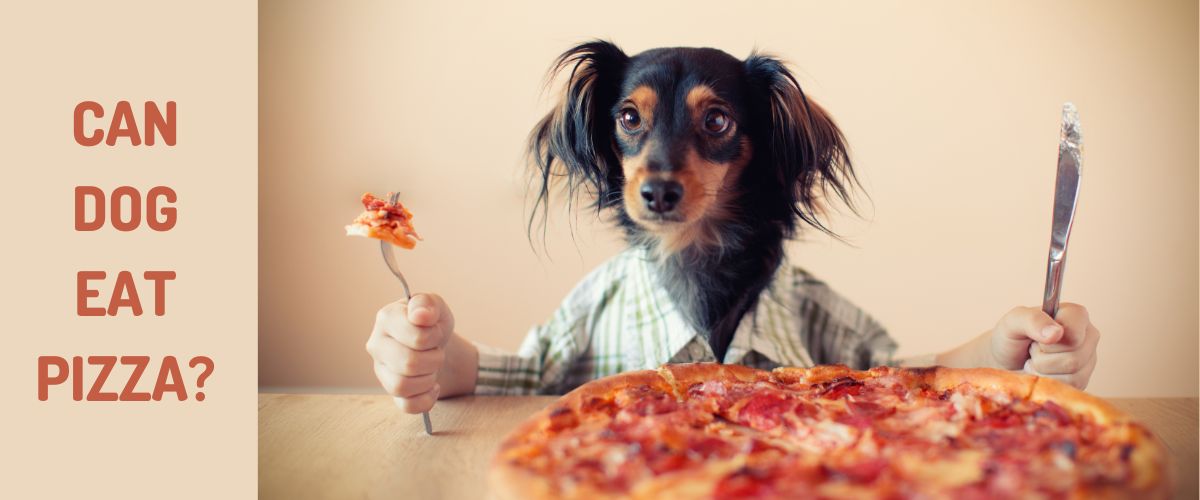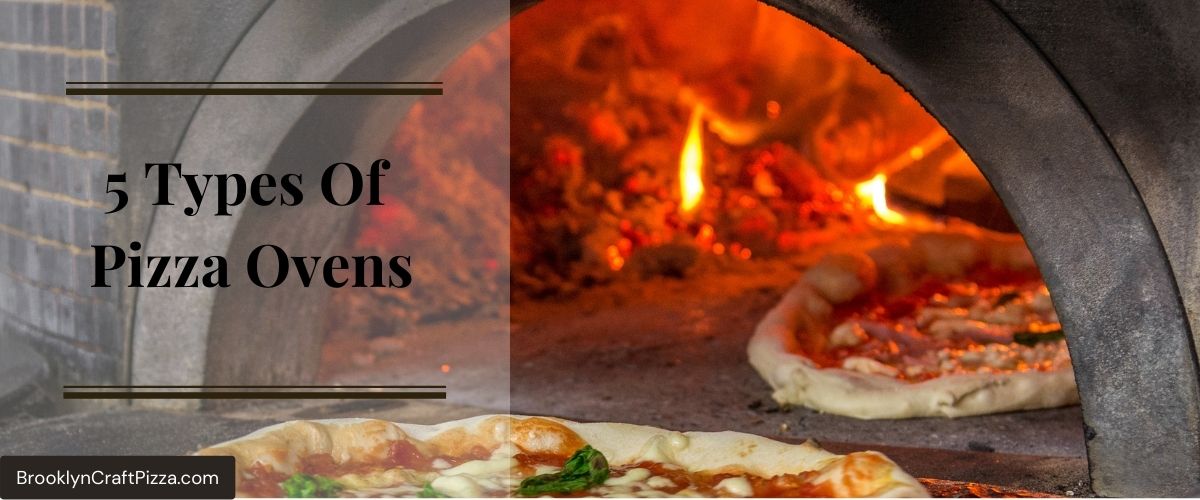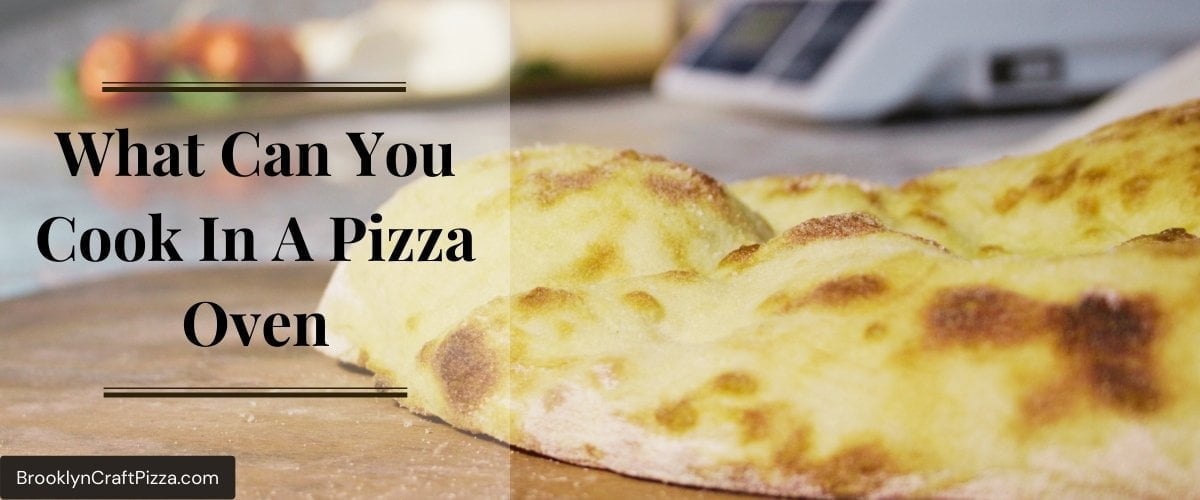Can Your Dogs Eat Pizza? Stop before it’s too late
Regardless of whether you’re a dog owner or not, you’ve probably seen those adorable videos online of dogs getting excited over and indulging in a slice or two of pizza.
Pizza is one of the most popular foods in the world, and it’s not surprising that many people want to share this delicious treat with their canine companions.
But can dogs eat pizza? Is eating pizza dangerous for dogs? Can dogs digest pizza dough and toppings? What are the risks and benefits of allowing your dog to eat this popular dish?
In this blog post, we’ll take a closer look at the risks and benefits associated with feeding your pup some pizza, as well as some common questions about this topic. We hope you find this information helpful and informative!
Quick Answer: Can Dogs Eat Pizza?
The answer is NO, pizzas are not safe for dogs to eat. Pizza is not a nutritious food for dogs and can cause them to become overweight or obese. Pizzas contain ingredients that can be toxic to dogs, such as onions, garlic, and tomato sauce.
In addition, the dough and crust can be difficult for dogs to digest. If your dog does eat pizza, watch for signs of gastrointestinal distress, such as vomiting or diarrhea. If your dog experiences these symptoms, contact your veterinarian immediately.
If you want to give your dog a treat, choose a healthier option like dog-friendly fruits and vegetables. Apples, bananas, and carrots are all safe for dogs to eat and are much healthier than a pizza.
Pizza is not the only food that is dangerous for dogs. Other common foods that are toxic to dogs include chocolate, grapes, raisins, avocado, and caffeine.
So before you share your next meal with your furry friend, make sure you know what foods are safe – and unsafe – for them to eat.
Why Is Pizza Bad For Dogs?
Turns out, there are a few reasons pizza isn’t the best food for your pup. For starters, most pizzas are loaded with garlic and onions, both of which can be toxic to dogs.
Onions and garlic are both members of the Allium family of plants. These plants contain compounds that can be toxic to dogs and can cause anemia.
- Garlic in particular can cause anemia and damage red blood cells in dogs if consumed in large enough quantities.
- Onions, on the other hand, can cause digestive upset and can lead to anemia as well.
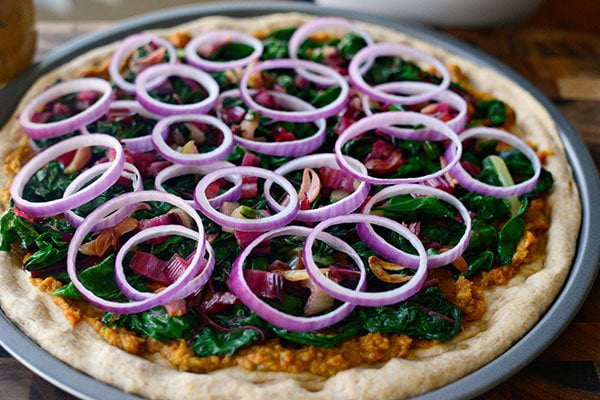
Additionally, many pizzas contain tomato sauce, which contains lycopene. Lycopene is fine for humans, but it can be toxic to dogs in large amounts. The acidity of tomato sauce may also contribute to gastrointestinal upset in some pups.
Tomato sauce is also acidic and can irritate your dog’s stomach. If your dog eats pizza, watch for signs of gastrointestinal distress, such as vomiting or diarrhea. If your dog experiences these symptoms, contact your veterinarian immediately.
The dough and crust can also be difficult for dogs to digest. When the dough rises, it produces carbon dioxide gas.
This gas can cause your dog’s stomach to bloat and twist, which is a life-threatening condition. In addition, the dough can contain yeast, which can lead to gastrointestinal upset in dogs.
Finally, most pizzas are topped with cheese, which can be difficult for dogs to digest. In fact, cheese is one of the most common food allergies in dogs.
So, Can Dogs Eat Pizza?
Technically, they can, but it’s not the best choice for their health. If you do feed your dog pizza, be sure to give them a small amount and avoid toppings like garlic, onions, and tomato sauce.
Additionally, keep an eye out for any digestive upset or other adverse reactions.
If you want to feed your dog pizza, it is best to make your own at home using dog-safe ingredients. This way, you can control what goes into the dish and avoid any potential hazards.

When it comes to store-bought pizza, it is important to check the label before feeding it to your dog. Some brands of pizza may use ingredients that are harmful to dogs, so it is always best to err on the side of caution.
In general, it is best to avoid giving your dog any human food, even if it is something that you think is safe. Dogs have different digestive systems than we do and what may not be a problem for us could cause serious issues for them.
If you are unsure about whether or not something is safe for your dog, it is always best to consult with a veterinarian first.
Which Ingredient Will Hurt Your Dog?
1) Pizza Crust
Most commercially-made pizza crusts contain garlic and onion powder, which can be toxic to dogs in large quantities. These spices can be toxic to dogs in large quantities and may cause gastrointestinal upset.
Eating a small amount of pizza crust is not likely to cause any serious problems, but it’s best to avoid letting your dog eat too much.
The dough can also contain raw yeast, which can cause bloating and gas. If your dog ingests pizza dough, they may vomit or have diarrhea.
Eating a small amount of pizza dough is not likely to cause any serious problems, but it’s best to avoid letting your dog eat too much.
2) Tomato Sauce
Tomatoes are poisonous to dogs in all forms, including sauce. Tomato sauce is another ingredient that can be harmful to dogs.
Tomatoes are fine for dogs to eat in small quantities, but the acidity of tomato sauce can cause gastrointestinal upset. If your dog eats too much tomato sauce, it may experience vomiting and diarrhea.
Watch for signs of an allergic reaction, such as itching, redness, or swelling. If your dog has a severe reaction, seek emergency medical care.
3) Cheese
Cheese is safe for most dogs to eat in moderation, but some types can be harmful. For example, blue cheese contains a toxin that can cause vomiting and diarrhea, while feta cheese can cause gastrointestinal upset.
However, some dogs are lactose-intolerant and may have trouble digesting cheese. This means that they can’t digest lactose, the sugar found in milk, which can cause gastrointestinal upset.
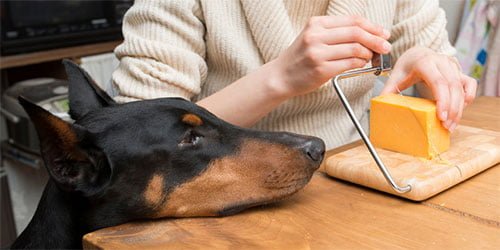
If your dog is lactose-intolerant, they may experience vomiting, diarrhea, and gas after eating cheese.
4) Pepperoni
Pepperoni is safe for dogs to eat in small quantities. Pepperoni is a type of cured meat that contains salt, fat, and spices. These ingredients can be harmful to dogs in large quantities and may cause gastrointestinal upset.
Some dogs are sensitive to spicy foods and may experience an upset stomach after eating pepperoni. If your dog is sensitive to spicy foods, they may experience vomiting, diarrhea, and gas after eating pepperoni.
Pepperoni can also contain mold, which can be toxic to dogs. If your dog ingests pepperoni, they may vomit or have diarrhea.
Eating too much pepperoni can cause pancreatitis in dogs. Pancreatitis is a serious condition that can lead to life-threatening complications.
5) Processed Meat
Processed meats like hot dogs, sausages, and ham are not the best option for your dog. These meats are high in sodium and fat, which can be difficult for your dog to digest.
They can also cause pancreatitis, an inflammation of the pancreas. If you do feed your dog processed meat, be sure to do so in moderation.
6) Pineapple
Pineapple is safe for dogs to eat in small quantities. Pineapple is a tropical fruit that contains enzymes that can tenderize meat. These enzymes can also break down the proteins in your dog’s digestive system, which can lead to diarrhea.
Feeding your dog too much pineapple can also cause gastrointestinal upset. If your dog eats too much pineapple, they may vomit or have diarrhea.
7) Other Toppings
Other toppings, such as sausage, ham, vegetables, and fruit, are generally safe for dogs to eat in moderation. These toppings can cause gastrointestinal upset if your dog eats too much of them.
However, some toppings can be harmful to dogs. For example, onions and garlic are toxic to dogs in large quantities, while raisins and grapes can cause kidney damage.
As a general rule of thumb, it’s best to avoid giving your dog any toppings that are high in fat, salt, or sugar.
The Bottom Line: Pizza And Dog
Pizza is not a balanced meal for dogs and should only be given to them in small quantities as a treat. If you give your dog pizza, make sure to remove all the toppings that could be harmful to them, including the crust.
You should also avoid giving your dog pizza if they are lactose intolerant or have any other food allergies, as it can be difficult for them to digest. If you have any concerns about feeding your dog pizza, please talk to your veterinarian.
What If My Dog Eats Pizza?
Dogs can safely eat small amounts of pizza crust and topping without any adverse effects. However, there are some potential risks associated with feeding your dog pizza, so it’s important to be aware of these before giving your pup a slice.
Potential Side Effects of Pizza for Dogs
Like people, every dog is different and may react differently to certain foods. Some potential side effects of feeding pizza to your dog include:
- Diarrhea
- Vomiting
- Abdominal pain or discomfort
- Upset stomach
- Increased thirst
- Increased urination
- Fatigue or lethargy
- Pancreatitis (in severe cases)
The biggest risk factor associated with feeding dogs pizza is the potential for choking. Dogs can choke on small pieces of crust or toppings, so it’s important to cut these into small pieces or avoid them altogether.
Another concern is that some of the ingredients in pizza, such as onions and garlic, can be toxic to dogs in large amounts. So, it’s best to avoid giving your dog pizza that contains these ingredients.
Finally, some dogs may be allergic to wheat, which is a common ingredient in pizza dough. If your dog is allergic to wheat, they may experience digestive issues after eating pizza crust.
If your dog eats a large amount of pizza dough, they may also experience bloating and gas. This is because the dough contains yeast, which can cause these symptoms in dogs.
If your dog experiences any of these side effects after eating pizza, it’s important to contact your veterinarian right away. They will be able to determine if your dog needs treatment and help them feel better.
Benefits of Feeding Dogs Pizza
While there are some potential risks associated with feeding dogs pizza, there are also some benefits. For example, pizza crust is a good source of fiber, which can help with digestive issues.
Additionally, the cheese in pizza can be a good source of protein for dogs. And, if you choose to top your dog’s pizza with healthy ingredients like vegetables, they’ll get some extra nutrients as well.
So, if you’re considering giving your dog a slice of pizza, it’s important to weigh the risks and benefits before doing so. And, as always, consult with your veterinarian if you have any questions or concerns about feeding your dog this popular dish.
Make A Homemade Pizza For Dogs
If you want to feed your dog pizza but are concerned about the potential risks, you can make a homemade pizza specifically for them. Start by choosing a dog-friendly dough and adding some healthy toppings.
You can also make your own dog-friendly dough by mixing together:
- 1 cup of whole wheat flour
- 1 cup of rolled oats
- 1/2 cup of cottage cheese
- 1/4 cup of peanut butter
- 1 egg
- Water as needed
Then, add some healthy toppings like cooked chicken, vegetables, and mozzarella cheese. Avoid adding onions or garlic, as these can be toxic to dogs.
Once you’ve added the toppings, bake the pizza at a low temperature until the crust is cooked through.
Feeding your dog pizza can be a fun and delicious way to treat them. Just be sure to choose a dough and toppings that are safe for dogs, and avoid giving them too much pizza at once. With a little planning, you can enjoy sharing this popular dish with your furry friend.
FAQs
Is pizza bad for dogs?
So, it’s important to choose a dog-friendly dough and toppings, and avoid giving your dog too much pizza at once.
Can dogs eat pizza crust?
Additionally, some dogs may be allergic to wheat, which is a common ingredient in pizza dough. If your dog is allergic to wheat, they may experience digestive issues after eating pizza crust.
Can dogs eat pizza toppings?
Additionally, some dogs may be allergic to wheat, which is a common ingredient in pizza dough. If your dog is allergic to wheat, they may experience digestive issues after eating pizza toppings.
Can puppies eat pizza?
So, it’s important to choose a dog-friendly dough and toppings, and avoid giving your puppy too much pizza at once. Additionally, you should consult with your veterinarian before feeding your puppy pizza, as they may have specific dietary needs.
Can dogs eat pepperoni pizza?
So, it’s important to choose a dog-friendly dough and toppings, and avoid giving your dog too much pizza at once. Additionally, you should check with your veterinarian before feeding your dog pepperoni pizza, as they may have specific dietary needs.
Can dogs eat pizza sauce?
So, it’s important to choose a dog-friendly sauce and avoid giving your dog too much pizza at once. Additionally, you should check with your veterinarian before feeding your dog pizza sauce, as they may have specific dietary needs.
Can dogs have pizza rolls?
So, it’s important to choose a dog-friendly dough and toppings, and avoid giving your dog too many pizza rolls at once. Additionally, you should check with your veterinarian before feeding your dog pizza rolls, as they may have specific dietary needs.
As you can see, there are some potential risks associated with feeding pizza to dogs. However, these risks can be minimized by choosing a dog-friendly dough and toppings, and avoiding giving your dog too much pizza at once. If you have any concerns about feeding your dog pizza, be sure to consult with your veterinarian first.
Will pizza make a dog sick?
So, it’s important to choose a dog-friendly dough and toppings, and avoid giving your dog too much pizza at once. Additionally, you should check with your veterinarian before feeding your dog pizza, as they may have specific dietary needs.
Can dogs eat veggie pizza?
So, it’s important to choose a dog-friendly dough and toppings, and avoid giving your dog too much pizza at once. Additionally, you should check with your veterinarian before feeding your dog veggie pizza, as they may have specific dietary needs.
Pizza is not typically considered to be a healthy food for dogs. However, there are some healthier alternatives that you can make at home using dog-friendly ingredients.
If you’re looking for a healthier option for your dog, try making a homemade pizzas using whole wheat flour, low-fat cheese, and healthy toppings like vegetables or lean meat. You can also look for commercially-available dog pizzas that are made with healthy ingredients.
Just like with human food, it’s important to moderation when feeding pizza to your dog. Too much of any kind of food, even healthy pizza, can lead to weight gain and other health problems.
So, only give your dog as much pizza as they can eat in one sitting, and avoid giving them table scraps from your own meal.
What should I do if my dog eats pizza?
Pizza is not typically considered to be a healthy food for dogs. However, there are some healthier alternatives that you can make at home using dog-friendly ingredients.
If you’re looking for a healthier option for your dog, try making a homemade pizzas using whole wheat flour, low-fat cheese, and healthy toppings like vegetables or lean meat. You can also look for commercially-available dog pizzas that are made with healthy ingredients.
Just like with human food, it’s important to moderation when feeding pizza to your dog. Too much of any kind of food, even healthy pizza, can lead to weight gain and other health problems.
So, only give your dog as much pizza as they can eat in one sitting, and avoid giving them table scraps from your own meal.
Final Thoughts
Many people are asking the question, “Can Dogs Eat Pizza?” The answer to this question is not a simple yes or no. There are many factors that need to be considered when deciding if pizza is safe for dogs to eat. Different ingredients in pizza can be harmful or toxic to dogs.
While it is generally safe to give your dog small amounts of pizza, there are a few things you should keep in mind.
✅ For one, make sure that the toppings on your pizza are safe for dogs – no pepperoni or sausage, please!
✅ Secondly, be careful about how much pizza your pup eats. Too much can lead to an upset stomach or even pancreatitis.
✅ Finally, always consult with your veterinarian if you’re unsure about whether or not a food is safe for your pet.
As long as you stick to these guidelines, your pup can enjoy a slice (or two) of this popular dish. Have you ever given your dog pizza? What kind of reaction did they have? Let us know in the comments below!
Thanks for following along with us today as we explored the question: Can dogs eat pizza? We hope this article has helped clear up any confusion and given you valuable information about what foods are safe (and unsafe) for your pup. Be sure to share this post with all your fellow dog lovers!

